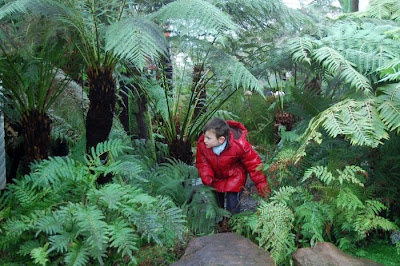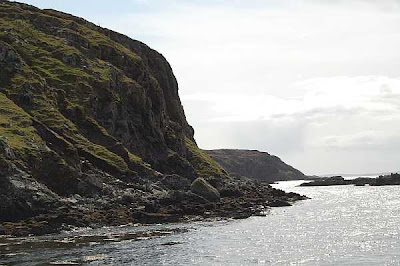Kibble Palace and the mystery of Victorian decadence
The facts are as follows: Constructed of wrought iron and glass, Kibble Palace was built by engineer and photographer John Kibble in the 1860s before it was dismantled and moved from his home at Coulport, Loch Long to Glasgow on a barge in 1871. Gifted to the city as the Kibble Crystal Art Palace and Royal Conservatory, it was used as a venue for concerts and exhibitions for several years until the 1880s when it began to be used for the cultivation of plants as part of the Botanic Gardens.
Following a lengthy and painstaking restoration, Kibble Palace reopened in 2006. The building’s innermost sanctuary continues to be dominated by a collection of Australasian tree ferns, many of which date back to the 19th century and have grown in the glass house for more than 120 years. A series of 19th century sculptures dot the outer walls as walkways splice through the jungle-like clutter.
Now on a typical weekend afternoon the dominant sound is that of children running and laughing as they chase each other or try to hide from their slower moving parents. Everywhere you turn, tiny explorers are bursting through the undergrowth, planning their next move.
It all sounds very straight forward, doesn’t it? Marvellously, Kibble Palace also looks a little like a Dr Who episode that has been set inside The Lost World, but there is still something missing. Despite the magnificence of the ornate columns and the surreal beauty of the centre dome, overall the place lacks the kind of warmth and lustre one would expect it to have.
Perhaps my expectations would not have been raised had I not read in my Rough Guide to Scotland that the palace, when it was first reconstructed in Glasgow, was used not as a concert venue but as a “Victorian pleasure dome.” The idea certainly changed things in my mind. Looking around, I imagined red carpeting, candlelight, ridiculous plush furniture and grown men and women playing very naughty games of hide and seek among the plant life. The Garden of Eden come to life.
Certainly, John Kibble himself paints an odd and intriguing character. Along with his decadent glass palace, Kibble’s inventions included a floating bicycle that he pedalled across Loch Long, and in 1858 the world’s largest camera, which was so big it had to be mounted on a horse-drawn cart.
For what it is, Kibble Palace is magnificent. It is an important piece of British architectural history and a valuable home to some very old and wondrous plants. But as I sat there all I could do was yearn for those morsels of magic that weren’t being utilized, and for the rest of the afternoon I continued to chase the ghosts of debauchery around my mind. Oh, what a luscious film set it would make.
Before we step away from the dreamlike world of glass and tall, strange plants, we have one more stop. A few steps from Kibble Palace is the Botanic Garden’s main range of glasshouses, there exists the most beautiful iron spiralled staircase reaching up-up-up towards the ceiling.
Rusting in places, the staircase is nestled among the trees and gated at the bottom to keep visitors from attempting to climb up. When the sun shines through the glass and pierces the gaps in the leaves, it is easy to imagine the stairs are ancient and abandoned and that they lead upwards into the clouds like in a fairytale. Or maybe it’s just me, following those invisible crumbs again.









































